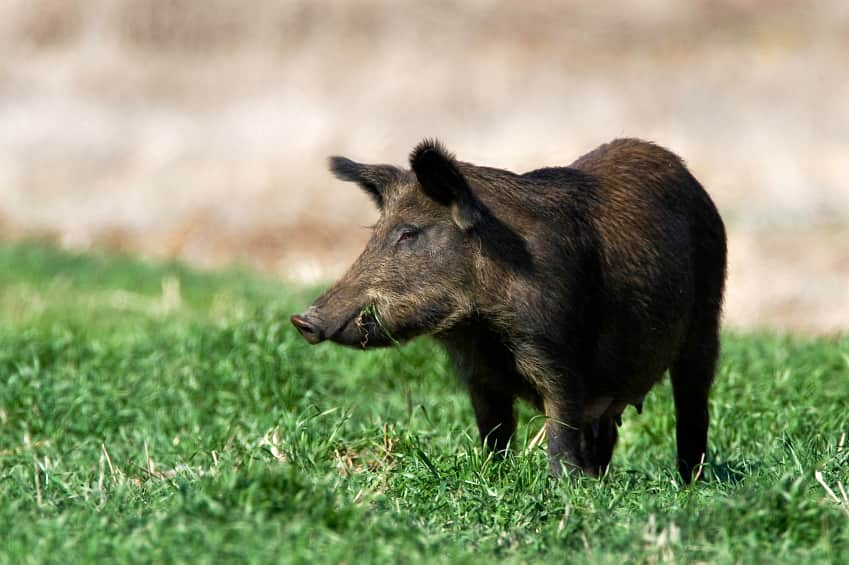Feral Swine and Brucellosis: How Hunters Can Minimize Risk
The Professor's Blog 02.13.13

In the United States, the non-native and invasive feral swine (Sus scrofa) population has quadrupled over the past 10 years and is currently estimated to be approximately 4 million animals ranging across at least 37 states. As the feral swine population expands and feral swine hunting becomes more popular, there is increased interaction and greater potential for disease transmission among feral swine, humans, commercial swine, and wildlife.
From 2007 to 2010, we conducted a disease survey (pdf) of over 600 feral swine across 13 North Carolina counties (where the majority of the state’s commercial swine production occurs). Although a variety of diseases were tested, the most notable results were the detection of the bacteria Brucella suis. Brucella suis is typically screened for by the National Wildlife Disease Program and, until this research, feral swine were antibody-negative in eastern North Carolina. Currently, B. suis does not occur in US domestic swine operations.
The presence of B. suis in a feral swine population that is routinely hunted raises concern about disease transmission to humans. In pigs, B. suis is a bacteria that can cause abortion in pregnant females, reduced milk production, and infertility. Importantly, B. suis is zoonotic (can be transferred from wildlife to humans; once transmitted it is called brucellosis) and can be transmitted to humans through cuts on the skin from handling the infected animals or inhaling the waste product of the animal.
In humans, brucellosis causes a variety of symptoms, such as fever, weight loss, fatigue, weakness, chills, joint pain, headaches and depression. Brucellosis can develop weeks to months after exposure, can last for days to months, and can be debilitating if not treated. Recent cases of B. suis infection in feral swine hunters were linked to butchering of swine but not to consumption of the meat. Diagnosing brucellosis can be difficult because of the wide-ranging and non-specific symptoms. Therefore, it is very important to inform your health care provider if you have come in contact with feral swine. Once identified, brucellosis is treated with antibiotics.
While in the field, there are some simple precautions that hunters should take to protect themself. First, hunters should always were long sleeves, gloves, and eye protection when cleaning any game animal. Your hands may have small cuts and cracks that can provide points for infectious diseases to enter your body. Further, avoiding unprotected direct contact with blood, fecal matter, the brain and spinal cord, and organs will help minimize risks. After cleaning the animal, be sure to clean and disinfect all knives, clothing, or cleaning surfaces and absolutely make sure to wash your hands frequently and carefully with soap and water. Additionally, B. suis transmission can be prevented by properly cooking the meat.
I hope you continue to follow this blog. Next week, I will be highlighting more of our research on feral swine. Specifically, Toxoplasma gondii and Trichinella spp.
Also, I encourage you to ask questions. I will answer them in upcoming blogs.

